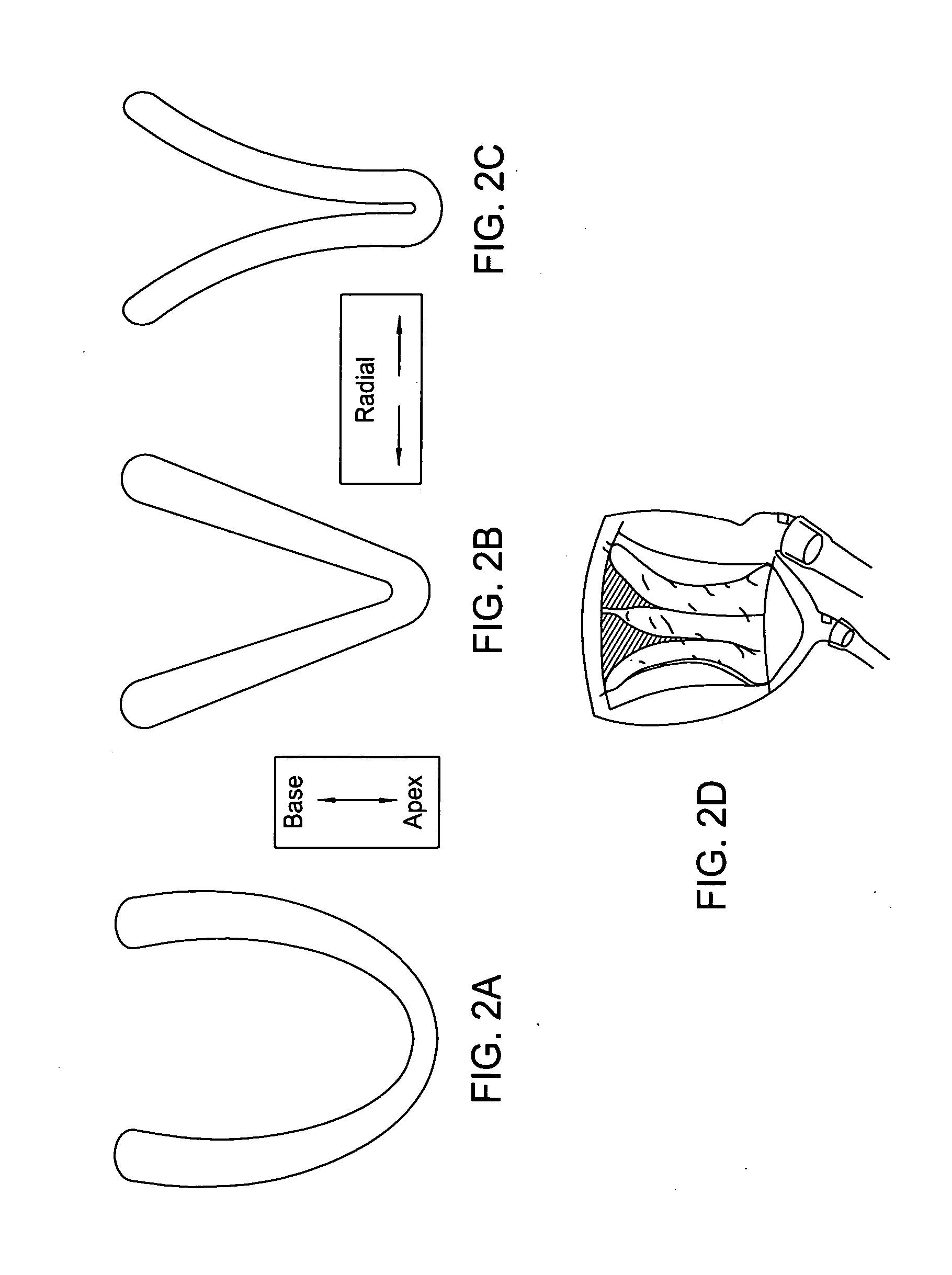Device for proactive modulation of cardiac strain patterns
a technology of cardiac strain and device, applied in the field of mechanical interface of the heart, can solve the problems of inability to achieve rapid implantation, inability to effectively manage the patient's heart failure, and inability to achieve the effect of reducing the risk of recurren
- Summary
- Abstract
- Description
- Claims
- Application Information
AI Technical Summary
Benefits of technology
Problems solved by technology
Method used
Image
Examples
example 1
Direct Cardiac Compression Device
[0110]FIGS. 12A and 12B are front view and horizontal cross sectional view of the present invention respectively. FIG. 12A illustrates the device 50 having a surface 78 having a basal edge 80 and an apical edge 84. The surface 78 includes welds 86 to form the chambers 52-74 and include the 4 right ventricle chambers 88 and the 8 left ventricle chambers 90. FIG. 12B illustrates the device 50 having an interior surface 76 on the endocardial side and an exterior surface 92 on the pericardial side. Welds 86 are used to form the chambers 52-74. In some embodiments, the interior surface 76 is made of 2 mils thick polyethylene and the exterior surface 92 is made of 6 mils thick polyethylene; however the skilled artisan will recognize other thickness (e.g., 0.1 to 12 mils) and other materials may be used.
[0111] By heat welding two polyethylene sheets together along particular folds (as see in FIGS. 12 and 13), a prototype DCCD according to an embodiment of...
example 2
In Vitro Testing
[0115] The device of Example 1 was tested on the benchtop and loaded with about 9 kPa of pressure. Based on previous experiments with an earlier device, it was expected to use driving pressures below 5 kPa. An important finding from this benchtop test was that the heart was not ejected from the device when the device was pressurized. This is an important design feature because sewing to the heart will not be needed and interference with the heart valves will be minimal. There were small leaks in the device, but leak proof devices are not required for most uses. Instead, one may place drains to vacuum on the apical end: one in the apical hole to remove air and fluid between the device and heart, and one to remove air and fluid between the device and mediastinum. Lost pneumatic driving fluid may be replaced as necessary.
[0116] This embodiment has also been tested in a live sheep, as expected from the benchtop trials, the device could be easily slipped over the heart ...
PUM
 Login to View More
Login to View More Abstract
Description
Claims
Application Information
 Login to View More
Login to View More - R&D
- Intellectual Property
- Life Sciences
- Materials
- Tech Scout
- Unparalleled Data Quality
- Higher Quality Content
- 60% Fewer Hallucinations
Browse by: Latest US Patents, China's latest patents, Technical Efficacy Thesaurus, Application Domain, Technology Topic, Popular Technical Reports.
© 2025 PatSnap. All rights reserved.Legal|Privacy policy|Modern Slavery Act Transparency Statement|Sitemap|About US| Contact US: help@patsnap.com



